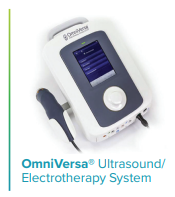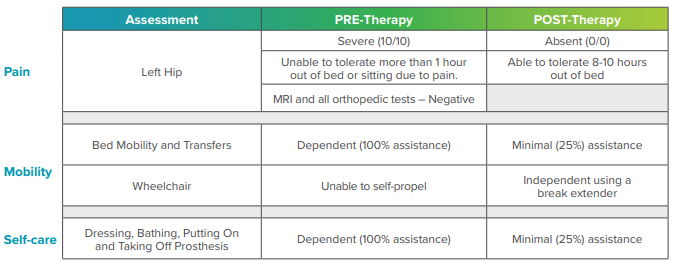A skilled nursing facility rehab department incorporated the OmniVR® for residents in their memory care unit as a way to make activities interactive and fun. Therapists note it is typically difficult to engage these and similar residents in activities, sustain their attention, and keep them actively involved.
Topics: Patient Success Story, Neuro Rehab
Improving Self-Care and Functional Mobility
This 66-year-old gentleman was admitted to a skilled nursing facility following a two-month hospitalization due to COVID-19 with pneumonia. He was weak and required 6 liters per minute of supplemental oxygen. Prior to hospitalization, he lived at home and was independent with all self-care and mobility.
Topics: Patient Success Story, Cardiopulmonary
Improving Speech and Ability to Eat Using Breathing Therapy Biofeedback
This 80-year-old woman experienced severe debility following hospitalization for COVID-19 with pneumonia. She was referred to a skilled nursing facility for rehabilitation services including speech therapy to address poor voice quality, and difficulty breathing while eating. She also required 3 liters per minute of supplemental oxygen. Prior to hospitalization, she had no limitations in speaking and eating.
Topics: Dysphagia, Patient Success Story, Speech Rehab
Improving Wound Healing and Mobility Using Electrical Stimulation, Ultrasound, and Exercise
This 82-year-old woman was unable to get up after falling at home. As a result of laying on her left side for more than 24 hours after the fall, she experienced tissue injury on her right hip that progressed over time to a non-healing unstageable (depth not visible) pressure wound. She was referred to outpatient physical therapy for wound healing and fall prevention. Prior to her fall, this woman lived alone and walked with a walker.
Topics: Patient Success Story, Wound Management
Improving Pain and Functional Mobility Using E-stim and Exercise Following a Stroke
This 78-year-old woman (a left below knee amputee for 30-years) suffered a stroke and received four weeks of inpatient rehabilitation. Due to severe hip pain and inability to perform self-care, she was then referred to a skilled nursing facility for rehabilitation services. Prior to her stroke, this woman lived alone and was independent with self-care and mobility while wearing her prosthesis.
Topics: Pain Management, Patient Success Story, OmniVersa
SLP Clinical Connection - Celebrate Success
Topics: Dysphagia, Patient Success Story, Speech Rehab
Improving Functional Mobility and Cardiovascular Endurance with Electrical Stimulation and Exercise
Patient Information: Male, Age 73
Diagnosis: Chronic Obstructive Pulmonary Disease (COPD) exacerbation.
History: This gentleman was referred to a skilled nursing facility for rehabilitation services to address significant weakness and functional decline after an exacerbation of COPD.
Topics: Patient Success Story, Cardiopulmonary
Wound Healing Using Diathermy and Exercise
Patient Information: Female, Age 64
Diagnosis: Cellulitis / Venous Insufficiency Ulcer / DJD Bilateral Knees
History:
This woman was referred to a skilled nursing facility for rehabilitation services following hospitalization due to cellulitis of her left lower leg. Thirty years ago, she fell and injured her left ankle and developed a venous insufficiency ulcer, which has never fully healed and recently has gotten worse due to the cellulitis. Prior to her hospitalization, she required maximal (> 75%) assistance from her husband for activities of daily living (dressing and bathing) and transfers due to a prior stroke and bilateral knee degenerative joint disease causing knee pain, weakness, and limited range of motion.
Topics: Patient Success Story, Wound Management
Improving Swallow Ability with sEMG and Exercise
Patient Information: Female, Age 75
Diagnosis: Supraglottic Cancer / Oropharyngeal Dysphagia / Chronic Obstructive Pulmonary Disease
History: This woman was referred to a skilled nursing facility for rehabilitation services due to progressively worsening swallow function following completion of radiation therapy for supraglottic (throat) cancer. During hospitalization, a video fluoroscopic swallow study (VFSS) was conducted due to dysphagia (difficulty swallowing) indicating aspiration (material entering the lungs), and a feeding tube was placed for all nutritional needs. Prior to the onset of throat cancer, she ate a regular diet.
Topics: Dysphagia, Patient Success Story
Decreasing Pain and Improving Strength Using Diathermy and Exercise
Patient Information: Female, Age 78
Topics: Pain Management, Patient Success Story

.png)
.png)
.png)


